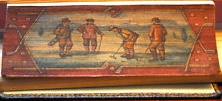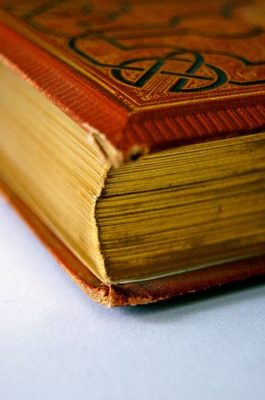
Marie Kondo would probably die of excitement or maybe feature me on a full season of tidying up. For one, I don’t throw away all the papers I own (my goodness, I work in a title company…single handedly our industry keeps the paper companies in business). Secondly, I LOVE books. My mom was a librarian; my sister was a librarian; I love to read! And, I am not going to get rid of them, nor would I think Marie would want me to since they bring me joy!

My husband (who is not so much a reader) and I just spent a morning discussing the charm of old books. Imagine the places a Dickens book from the late 1800s has traveled. Did it cross the ocean with its owner? Or maybe visit all sorts of dusty old towns as part of a traveling library? Who has read it and cherished it?

Of course old books are also beautiful at which to look. Leather bindings, marbled fly pages, and maybe even a hidden fore edge make old books something amazing to behold. Then of course you have the actual mystery of the tale to be read inside.

Decorators have used old books for decoration for many years. Sadly, it is this use that makes them still of value in many a modern home. Old books serve as bits of colorful binding for a bookshelf or as a riser for a planter or side lamp.

What hurts me is to go to a store and find an old books cut into the shape of an initial or gutted in order to create a hiding place for valuables. Maybe the pages were ripped out to use for other creative purposes like painting or printing over the wording. Or maybe even worse, when a collection of books have their bindings cut off to be glued to a wall to appear to be a loaded shelf of books in a bookcase (go ahead and paint a trompe-l’oeil bookcase if you don’t want or have room for a real bookcase, please). I have been around too many librarians to not wince at the thought.

What started the discussion between my husband and me was a little video on facebook about the hidden pictures on the edge of old books. Called fore edge paintings, these little scenes are charming. In some cases they are visible when the book is closed and looking at the page edges. In other cases, one must fan the pages up or down to see them (single fore edge). Some books have paintings in both directions (double fore edge) and still other books have painting in both directions as well as when the book is closed (triple fore edge).

Fore edge is just one more characteristic that expresses how treasured books were to our forefathers. Not only was the content a work of art, but the outside was as well.

Do you own any old books? Do you read them or just admire them? Are you lucky enough to own any with a fore edge painting? If so, please share a photo. I would love to see them!

Bonus Information: You can easily own a book with fore edge painting. Several are for sale on online sites such as ebay or 1st dibs. What I found interesting is that books about fore edge painters and experts are more expensive than some of the actual antique books with fore edge painting.


Kayla! I love this! I’ve been missing out and had no clue. Looking forward to more…I’ll be back!
Qene, thank you! I wish I had your talent for storytelling! Good to hear from you! Kayla